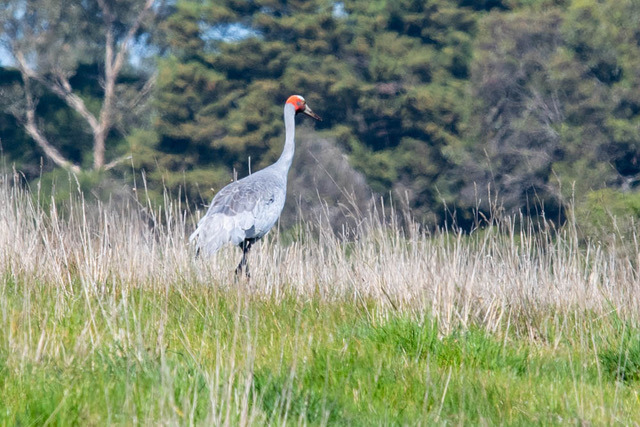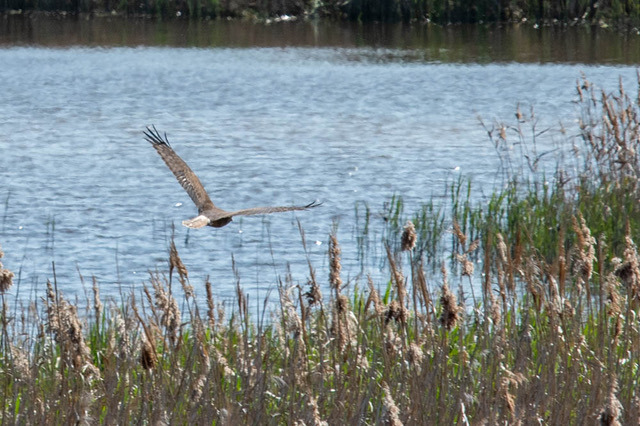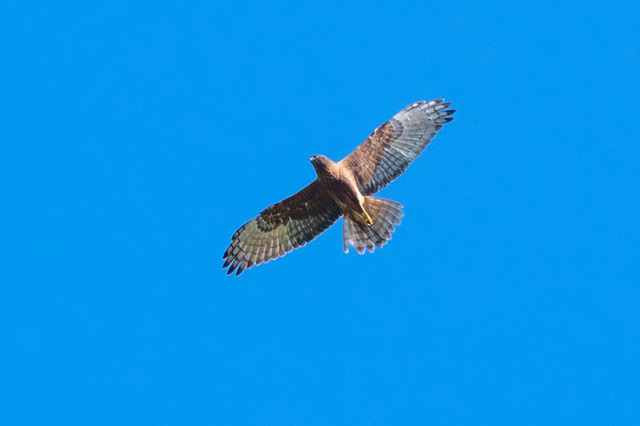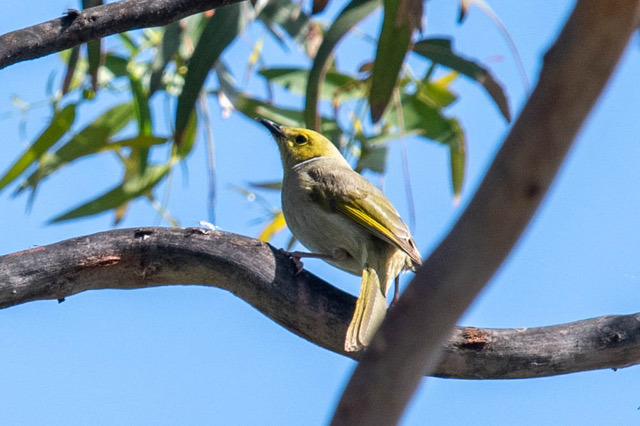In September we had a combined Orange-bellied Parrot (OBP) survey and bird walk at Baenschs Lane and Hospital Swamp.
As expected there were no OBPs and, disappointingly, none of their Blue-winged cousins either, however there were lots of other birds to see in this attractive location. The main highlight for the day appeared first thing…a beautiful Brolga walking in a paddock next to the car park.
 Brolga
Brolga
Walking down the lane we were surrounded by the constant raucous calls of Australasian Reed-Warblers, which unfortunately have had a name change from the very apt Clamorous Reed Warbler. Occasionally we heard the haunting sound of a Little Grassbird, but both species remained out of sight.
The long area of water beside the lane had many species of water birds including the second highlight…one of the rare Freckled Ducks swimming with a small flock of Coots…a confused duck or just short of friends? Also of special interest was one male Musk Duck with its odd and distinctive skin flap dangling under its beak, and a pair of Australasian Shovellers.
We had one difficult water crossing which necessitated gumboots or bare feet.

From the level bank at the end of the lane we looked down on a paddock of Beaded Glasswort, a favourite OBP food. It initially seemed devoid of birdlife until we saw a few White-fronted Chats, which were a first sighting for one of our group.
 White-fronted Chat
White-fronted Chat
The wide water of Hospital Swamp on the other side of the levee bank had a multitude of Black Swans, but little else of interest to us. However several Swamp Harriers kept us entertained as they dived and swooped for prey, plus a few other bird species.

 Swamp Harriers
Swamp Harriers
Margaret Lacey’s camera identified some species which our eyes missed, and that helped our number of ‘ticks’. On our walk back we heard several, and then finally had good sighting of the appealing Golden-headed Cisticola.
 Golden-headed Cisticola
Golden-headed Cisticola
We saw a number of the colourful Red-rumped Parrots, mainly sitting on nest boxes.
After late morning tea in the car park some of us went on to Hospital Swamp Road. We were not impressed with the advertising sign on the corner for the Field and Game Association saying ‘three months a year we enjoy duck season…’

We saw a number of new species here including Eastern Rosella, Australasian Pipit, White-plumed Honeyeater, and several Black-faced Cuckoo- shrike, and were very happy with a total of 51 species.
 Australasian Pipit
Australasian Pipit
 White-plumed Honeyeater
White-plumed Honeyeater
Ellinor Campbell